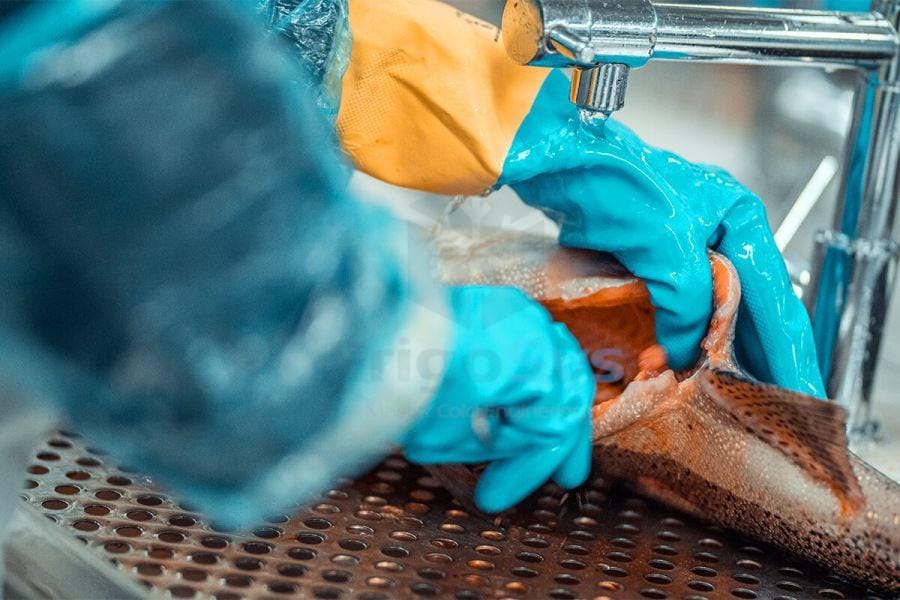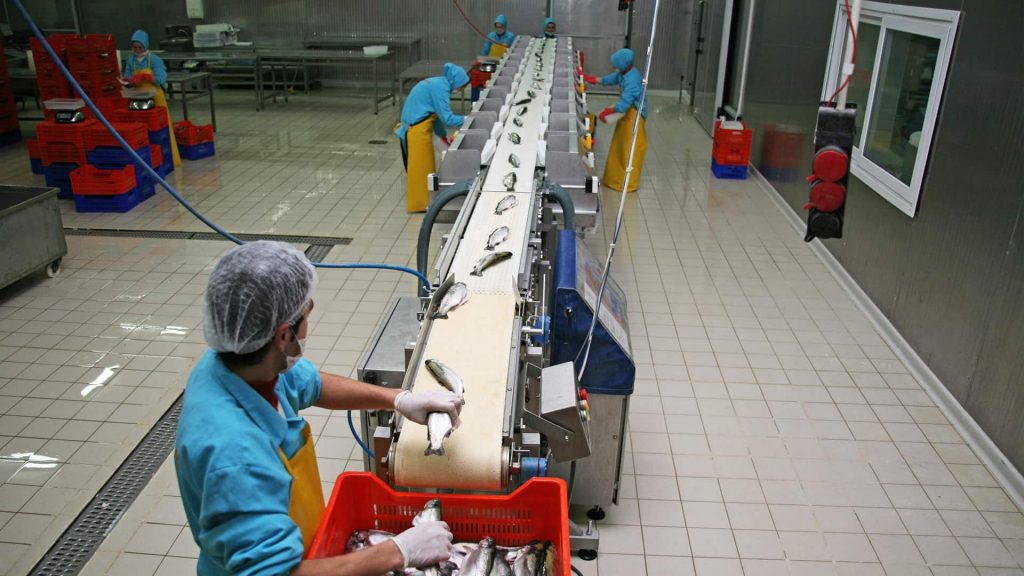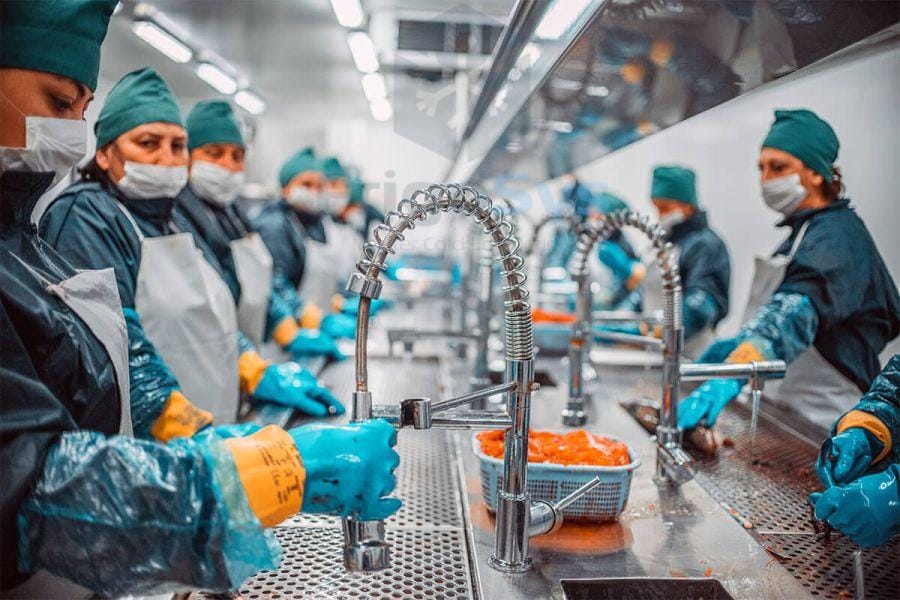A Fish cold storage is any building or part of a building used for storage at temperatures controlled by refrigeration at -1WIC or lower.

Recommended Fish Cold Storage Temperature
The spoilage of fish due to protein denaturation, fat changes, and dehydration can all be slowed down by reducing the storage temperature. The FAO Code of Practice for Frozen Fish recommends that frozen fish products should be stored at temperatures appropriate for the species, type of product, and intended time of storage.
The recommended storage temperature for all fishery products in the UK is -30°C and this temperature has also been adopted throughout Europe. Spoilage by bacterial action in any practical sense is completely arrested at this temperature and the rate at which other undesirable changes proceed is greatly reduced. Some products can be stored safely at higher temperatures than the -30°C recommended providing storage is only for a short period. Since it is not always possible to guarantee that a product will stay in storage no longer than originally intended, it is generally safer to use the lower recommended temperature.
The International Institute of Refrigeration recommends a storage temperature of -18°C for lean fish such as cod and haddock and -24°C for fatty species such as herring and mackerel. The code also recommends that for lean fish intended to be kept in cold storage for over a year, the storage temperature should be -30°C.
Cold store operators can seldom be sure to store only one species or type of fish or to store it for a limited period only. Cold stores built for fish storage should preferably be able to operate at -30°C but can be operated at a higher temperature if circumstances and relevant codes or recommendations allow.
It has been calculated by an eminent authority on cold store design that under specific conditions, the total cost of operating a cold store at -30°C is only 12 percent higher than when operating at -20°C although the corresponding percentage increase in running costs will be higher.
| Product | Storage life in Months | ||
| – 18°C | – 24°C | – 30°C | |
| Fatty fish (glazed) | 5 | 9 | > 12 |
| Lean fish (fillet) | 9 | 12 | 24 |
| Flatfish | 10 | 18 | > 24 |
| Shrimp (cooked/peeled) | 5 | 9 | 12 |
Factors Limiting Fish Cold Storage Life
Protein changes: Fish proteins become permanently changed during freezing and cold storage and the speed at which this denaturation occurs depends very largely upon temperature. At temperatures not very far below freezing point, -2°C for example, serious changes occur rapidly; even at -10°C, the changes are so rapid that an initially good quality product can be spoilt within a few weeks. The rate of deterioration due to protein denaturation, however, can be slowed by ensuring that storage is at as low a temperature as possible.
Fat changes: Fatty fish may become unpleasantly altered during cold storage but they can be protected to some extent either by glazing or by packaging in plastic bags sealed under vacuum. These oxidation changes take place more rapidly at higher temperatures and storage at a low temperature is an effective means of slowing the rate of spoilage by this method.
Colour changes: The quality of fish is often judged by appearance, and colour changes which are not otherwise significant can result in fish being downgraded. The changes in the fish flesh which bring about these colour changes are also retarded at lower temperatures.
Dehydration changes: Dehydration of the product is probably the major concern of the cold store operator and the rate of drying can be linked with a number of factors in cold store design and operation.
When fish get badly dehydrated in cold storage, the surface becomes dry, opaque and spongy. As time progresses, these conditions penetrate deeper into the fish until it becomes a fibrous, very light material. Visible effects of severe dehydration on the surface of the fish are known by the term “freezer burn”. This is an unfortunate choice of term since the effect is unlikely to result from freezing in a properly designed freezer, and appears only after storage periods in a cold store.
Frozen fish may dry slowly in cold storage even under good operating conditions. This is undesirable for reasons other than the obvious one that the product will lose weight. Drying also accelerates the denaturation of the protein and oxidation of the fat in the fish. Even totally impervious wrappers used to protect the product do not give full protection if the cold store operating conditions are favourable for desiccation within the pack. In-pack desiccation prevails when there is some free space within the wrapper and the temperature of the store fluctuates. When this occurs, there will be times when the wrapper is colder than the fish and moisture will then leave the product and appear as frost on the inner surface of the wrapper. The total weight of the product and package will not change but if the in-pack dehydration is severe, the fish will have the quality defects of excessive drying.

Choice of Planners and Designers
When considering the construction of a cold store, one of the very first steps is to decide on specialists responsible for planning, design and project management. The construction of cold stores involves a number of factors besides the actual building. The use of specialists enables the organisation responsible for the project to:
- Share the responsibility for the project with an outside body.
- Avoid building up a department of costly specialists who may not have adequate knowledge in the field of activities and who eventually will not be fully occupied with the project.
- Benefit from the practical experience of the specialist group.
- Save time as initial training and research will not be required.
- Ensure that the latest techniques are used.
It is recommended that specialists handle a project all the way from a feasibility study to commissioning, including supervision and training of the local management responsible for the future operation of the cold store.
Source: FAO
